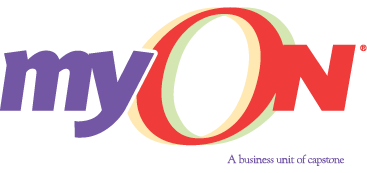“Living Laboratories” allow students to experiment and collaborate.
 The word renaissance refers to new ways of thinking, to innovation and rebirth. For Des Plaines School District 62 in Illinois, the idea of renaissance is inspiring us to think differently about the who, what, where, when, and why of learning. Technology plays a large role in the answer to all those questions and often determines our students’ level of engagement.
The word renaissance refers to new ways of thinking, to innovation and rebirth. For Des Plaines School District 62 in Illinois, the idea of renaissance is inspiring us to think differently about the who, what, where, when, and why of learning. Technology plays a large role in the answer to all those questions and often determines our students’ level of engagement.
With that in mind, our district has made the commitment to be forward thinkers and to prepare our students for high school, college, and careers—long before they reach 12th grade. The only way to do that is to ride with them on the digital journey, moving past the idea of using technology to build skills and instead using it to foster collaboration and to prompt critical thinking. But how much collaboration can truly be done in a traditional classroom, in rigid rows of desks and chairs? It was by asking this question that District 62’s digital transformation was born.
We dreamed of creating open and colorful spaces equipped with ergonomic furniture, breakout rooms, and equal access to the newest technology. We also wanted spaces to bridge the gap between the traditional library and the technology-filled classroom. Our schools are nearly 80 years old, so it was challenging to create open and welcoming areas where our digitally native students could collaborate, develop 21st-century skills, and become digitally literate.
To make the dream a reality, we created a five-year master plan to carefully manage district funds so we could transform one room in each of our 11 K–8 schools into what we call Technology-Integrated Learning Environments, or TILE spaces.
Turning Classrooms into Living Laboratories
We designed the TILE rooms to be “living laboratories” so teachers and students would have equal opportunity and flexibility to engage and collaborate using the newest available technology. The environment encourages experimentation and exploration, while accommodating active learning styles and techniques.
Walking in, you see two interactive whiteboards, tablet computers, floor-to-ceiling marker boards, and tackable walls to inspire creative thinking and collaboration sessions. Wherever possible, we used glass walls to let in natural light, and created breakout spaces where students can work in small groups. Each room is also equipped with colorful, versatile, and mobile furniture—including ergonomically correct chairs, which have been shown to improve cognitive engagement.
Sounds like a room every administrator would want in his or her school, doesn’t it? Our TILE spaces didn’t start this way. When we first created them, each TILE space had a designated laptop cart. As the budget allowed, we added new technology, piece by piece. Now, teachers often plan to bring their students to the TILE rooms during different class periods to collaborate and explore the wide variety of technology available.
The next phase of the project is to create “green spaces” within the TILE rooms where students can collaborate on the creation, recording, and editing of videos. We have a green space in one school and plan to add a couple more this year.
The 21st-Century Library
So where do traditional libraries and library media specialists fit into this picture? In many cases, our TILE rooms are connected to the school’s library, and media specialists work in the TILE spaces. The library and TILE rooms help build 21st-century skills by providing opportunities for collaboration, research, creation, and problem solving, and the media specialists are the trailblazers in creating the perfect environment.
While today’s students are widely known as “digital natives,” that doesn’t mean they are digitally literate. Texting, engaging in social media, and playing video games on mobile devices are second nature for students, but they are less likely to use those devices to practice literacy skills such as active reading and critical thinking. As students and teachers transition from paperback books and encyclopedias to online resources, we’ve discovered digital literacy doesn’t come naturally. With technology at our students’ fingertips, our task is to teach them how to be good digital citizens and how to recognize the difference between credible and non-credible resources.
Our media specialists and teachers use a co-teaching/co-planning model to serve our digital natives and teach digital literacy. Digital text such as news articles and online research resources are quickly becoming part of everyday life. Our media specialists play a large role in teaching students how to engage with digital text, which in turn prepares them for high school, college, and beyond.
A Library in Their Backpacks
To help fine-tune their digital literacy skills, we wanted to equip students with an entire library in their backpacks. We wanted students to have access to books anytime, anywhere, so we adopted myON, a digital literacy environment offering more than 10,000 books online. We harnessed the power of the digital library by creating and sharing digital bookshelves on diverse topics and at various Lexile levels. The research and reading options offer a way to teach students how to engage with digital text like never before.
The ongoing mission of our digital transformation is to empower students, teachers, and administrators to embrace technology as a tool for teaching valuable cross-curricular skills such as collaboration, problem solving, and digital literacy. It’s our goal to prepare students for their future as learners who will carry these skills into their professional lives and eventually go on to mold the future of technology use.
Dr. Jan Rashid is the assistant superintendent of Des Plaines School District 62 in Illinois.


